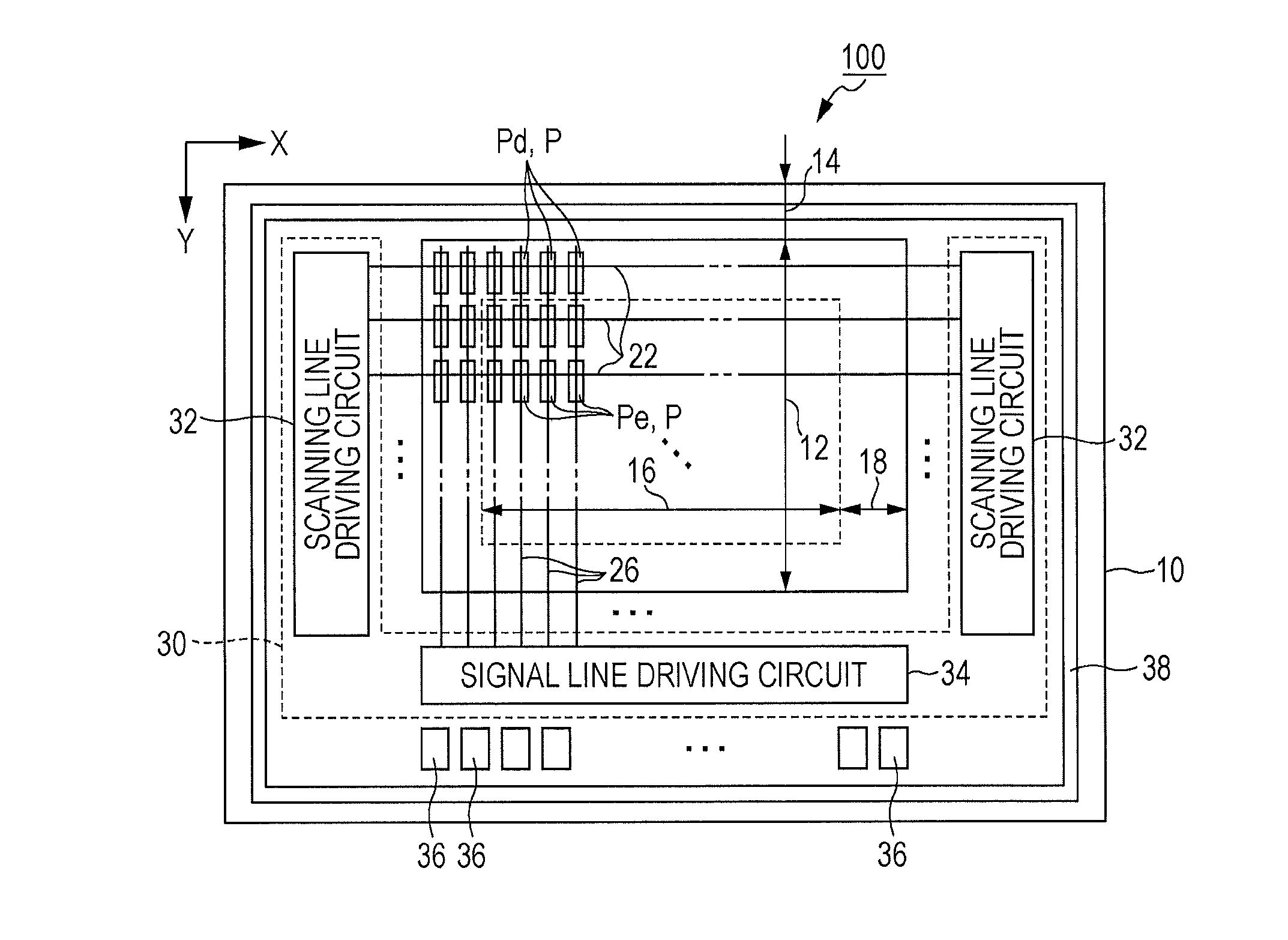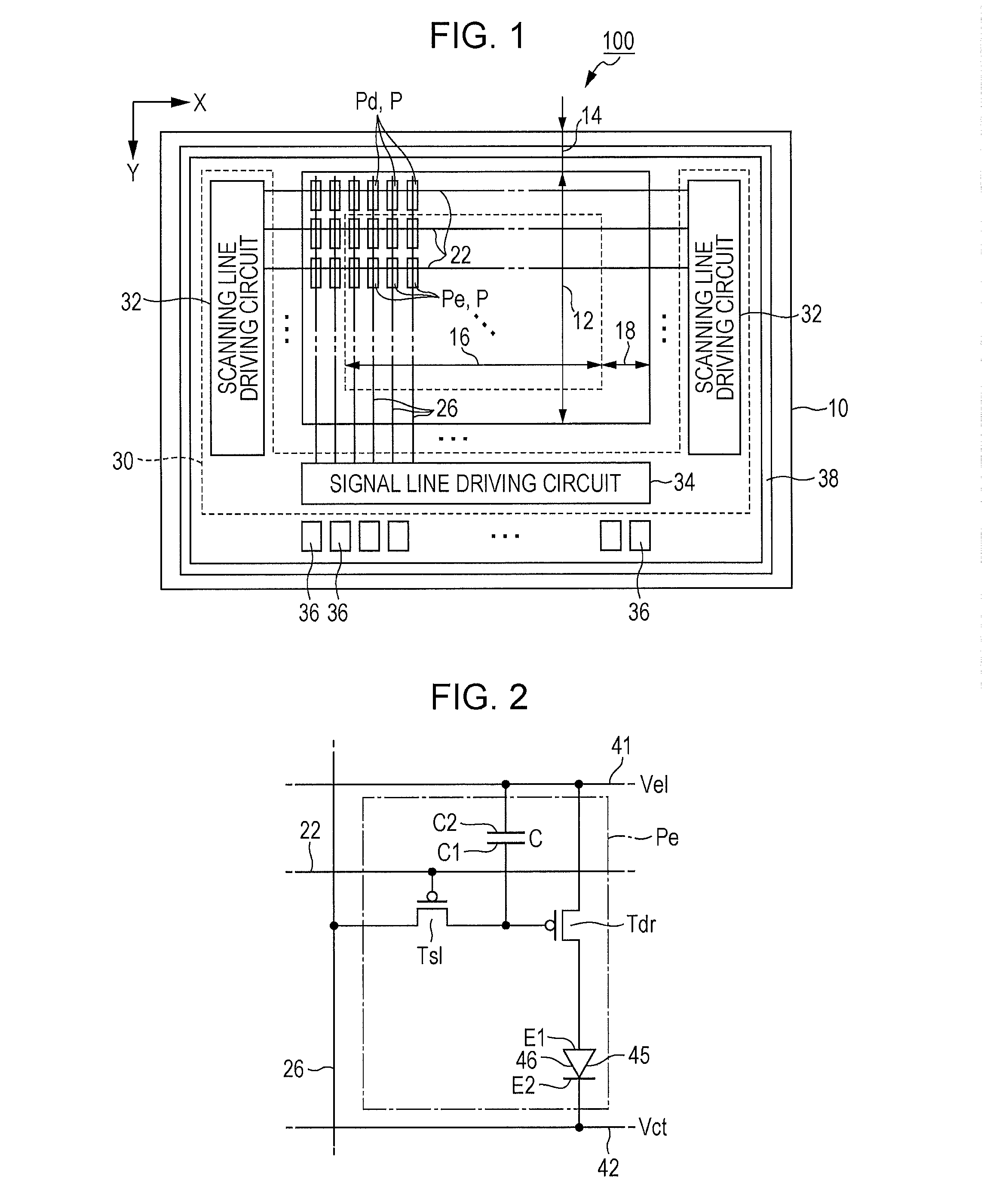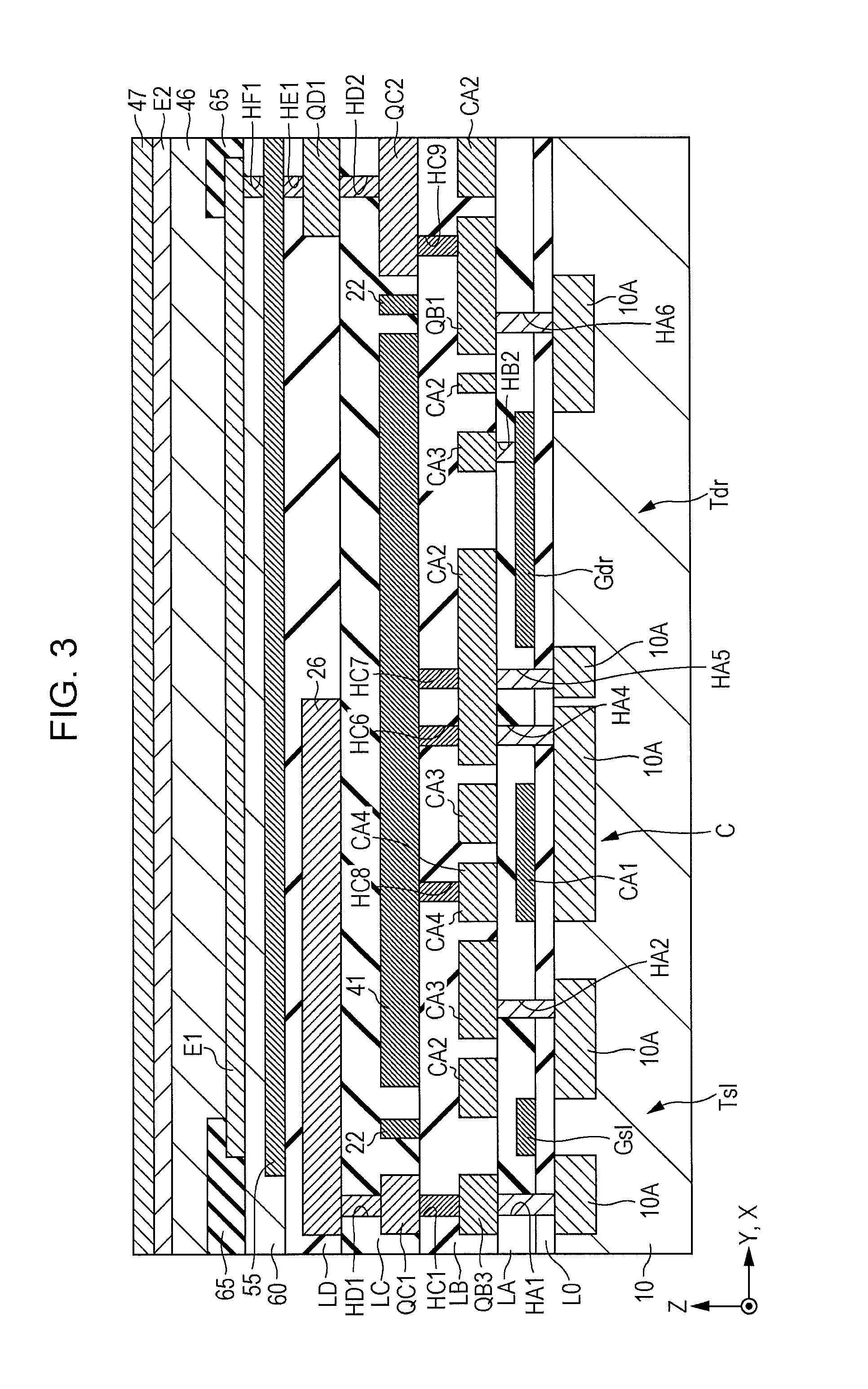Organic electroluminescent device and electronic apparatus
- Summary
- Abstract
- Description
- Claims
- Application Information
AI Technical Summary
Benefits of technology
Problems solved by technology
Method used
Image
Examples
first embodiment
[0090]FIG. 1 is a plan view of an organic electroluminescent device 100 according to a first embodiment of the invention. The organic electroluminescent device 100 of the first embodiment is an organic EL device in which a light emitting device using an organic EL material has been formed on a surface of a substrate 10. The substrate 10 is a plate-shaped member (semiconductor substrate) formed of a semiconductor material such as silicon, and is used as a substrate (base) on which a plurality of light emitting elements are formed. As illustrated in FIG. 1, the surface of the substrate 10 is divided into a first area 12 and a second area 14. The first area 12 is a rectangular area, and the second area 14 is a rectangular frame-shaped area that surrounds the first area 12.
[0091]In the first area 12, a plurality of scanning lines 22 extending in an X direction, and a plurality of the signal lines 26 extending in a Y direction crossing the X direction are formed. A pixel P (Pd or Pe) is ...
second embodiment
[0153]A second embodiment of the invention will be described. Further, in each form to be illustrated below, elements having the same operation or function as in the first embodiment are denoted with signs referred to in the description of the first embodiment, and each detailed description will be appropriately omitted.
[0154]FIG. 18 is a circuit diagram of each display pixel Pe in this embodiment. As illustrated in FIG. 18, the display pixel Pe in this embodiment includes an emission control transistor Tel and a compensation transistor Tcmp, in addition to a light emitting element 45, a driving transistor Tdr, a selection transistor Tsl, and a capacitive element C. Further, in this embodiment, although the transistors T (Tdr, Tel, Tsl, and Tcmp) of the display pixel Pe are a P-channel type, an N-channel type transistor can also be used. A circuit of the display pixel Pe in this embodiment can be driven using any one of a so-called coupling driving scheme and a so-called current pro...
third embodiment
[0193]A third embodiment of the invention will be described. Further, in each form to be illustrated below, elements having the same operation or function as in the first embodiment and the second embodiment are denoted with the signs referred to in the description of the first and second embodiments, and each detailed description will be appropriately omitted.
[0194]A circuit of each display pixel Pe of the third embodiment is the same as the circuit of the second embodiment, and includes a compensation transistor Tcmp and an emission control transistor Tel. A specific structure of the organic electroluminescent device 100 according to the third embodiment is substantially the same structure as the specific structure of the organic electroluminescent device 100 of the second embodiment. Hereinafter, only a difference will be described for simplification.
[0195]FIG. 32 is a sectional view of the organic electroluminescent device 100, and FIGS. 33 to 40 are plan views illustrating a st...
PUM
 Login to View More
Login to View More Abstract
Description
Claims
Application Information
 Login to View More
Login to View More - R&D
- Intellectual Property
- Life Sciences
- Materials
- Tech Scout
- Unparalleled Data Quality
- Higher Quality Content
- 60% Fewer Hallucinations
Browse by: Latest US Patents, China's latest patents, Technical Efficacy Thesaurus, Application Domain, Technology Topic, Popular Technical Reports.
© 2025 PatSnap. All rights reserved.Legal|Privacy policy|Modern Slavery Act Transparency Statement|Sitemap|About US| Contact US: help@patsnap.com



